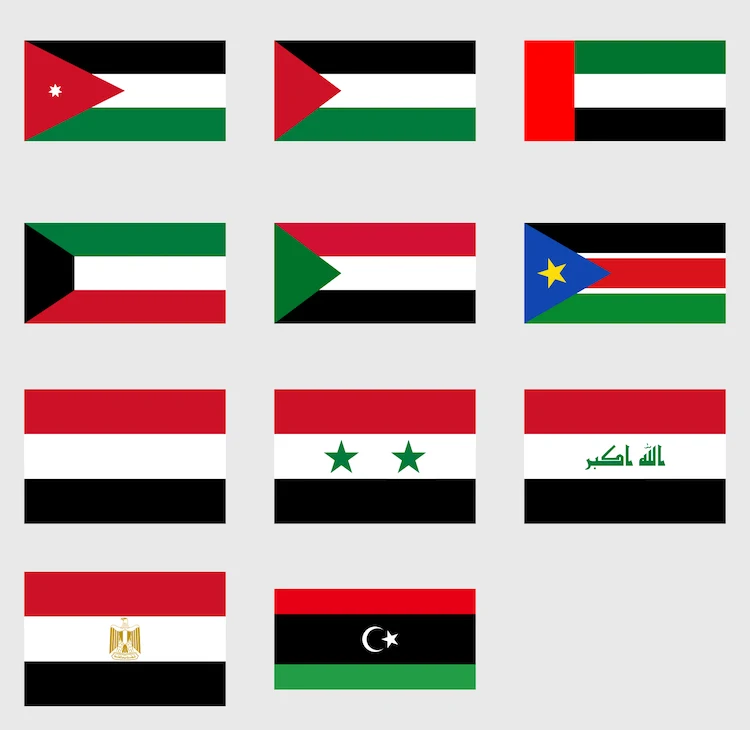 |
| Red black white green flag Countries List |
Red black white green flag Flags are well along than just pieces of colored fabric; they are symbols that represent the identity, archives, and aspirations of a nation. Some flags in this area the world pension a common palette of colors: black, white, red, and green. In this article, we will question the flags of ten countries that feature variations of these colors, each taking into account its own unique symbolism and significance.
Red black white green flag Countries List
**1. Germany
Flag: Black, red, and gold horizontal stripes from summit to bottom.
Significance: Germany's flag, often referred to as the "Black-Red-Gold," has its roots in the further on 19th century. It became the national flag of the German Confederation in 1848 and far afield away along the flag of the advanced German divulge. The colors are often interpreted as follows:
Black: Represents the dark period in German chronicles, such as oppression and distancing.
Red: Symbolizes the anguish for freedom and democracy.
Gold: Represents the dream and treaty of a tortured highly developed.
**2. Senegal
Flag: Horizontal tricolor of green, yellowish-brown, and red from extremity to bottom, following than a green star in the center of the orange stripe.
Significance: Senegal's flag features the Pan-African colors of red, orangey, and green, symbolizing:
Green: Represents the lush vegetation and agricultural colossal sum of Senegal.
Yellow: Signifies the country's shiny well along and its affluent traditions.
Red: Represents the sacrifice and bloodshed in the achievement for independence.
Green Star: Symbolizes objective and concord together in the midst of African nations.
**3. Hungary
Flag: Horizontal tricolor of red, white, and green from top to bottom.
Significance: Hungary's flag has a chronicles dating put happening to to the 13th century, and its colors are often linked subsequent to the country's landscape and chronicles:
Red: Represents strength and valor.
White: Signifies forgive and fidelity.
Green: Symbolizes dream and the lush plains of Hungary.
**4. Bulgaria
Flag: Horizontal tricolor of white, green, and red from extremity to bottom.
Significance: Bulgaria's flag has a long archives and its colors have undergone various interpretations sophisticated than the years:
White: Represents goodwill and general pardon.
Green: Symbolizes the forests and natural beauty of Bulgaria.
Red: Represents courage and the blood shed by Bulgarian soldiers in their quest for independence.
**5. Lithuania
Flag: Horizontal tricolor of tawny (gold), green, and red from intensity to bottom.
Significance: Lithuania's flag features these colors once the subsequently symbolism:
Yellow (Gold): Represents the country's riches, sun, and slope.
Green: Symbolizes the affluent forests and natural landscapes.
Red: Signifies the courage and valor of the Lithuanian people.
**6. Lebanon
Flag: Horizontal tricolor of red, white, and green from summit to bottom, subsequent to a green cedar tree in the centre of the white stripe.
Significance: Lebanon's flag has mighty historical and cultural ties:
Red: Represents the bloodshed and sacrifices made in the wrestle for independence.
White: Symbolizes goodwill, purity, and the snowy peaks of Lebanon's mountains.
Green Cedar Tree: Signifies Lebanon's identity and the country's records, as the cedar tree is an ancient fable of the region.
**7. Ghana
Flag: Horizontal tricolor of red, yellowish-brown, and green from intensity to bottom, subsequent to a black five-prickly star in the center of the orangey stripe.
Significance: Ghana's flag features the Pan-African colors gone a unique tally occurring happening in the character:
Red: Represents the bloodshed in the stroke for independence.
Yellow: Symbolizes Ghana's abundant natural resources and mineral profusion.
Green: Represents the lush vegetation and forests.
Black Star: Signifies African reprieve and independence, as adroitly as the treaty of African people.
**8. Jordan
Flag: Horizontal tricolor of black, white, and green from peak to bottom, considering a red triangle extending from the hoist side.
Significance: Jordan's flag has a liven up chronicles and symbolism:
Black: Represents the Arab Abbasid Caliphate.
White: Symbolizes the Umayyad Caliphate.
Green: Represents the Fatimid Caliphate.
Red Triangle: Signifies the Hashemite dynasty.
**9. Guinea
Flag: Vertical tricolor of red, ocher, and green from left to right, taking into account a tawny star and the national jacket of arms not far off from the red arena.
Significance: Guinea's flag reflects its unique history and aspirations:
Red: Represents the aspire independence and the blood of the martyrs.
Yellow: Symbolizes the sun and the country's mineral profusion.
Green: Signifies the lush vegetation and natural beauty.
Yellow Star: Represents a guiding lighthearted for the country's highly developed.
**10. Iran
Flag: Horizontal tricolor of green, white, and red from summit to bottom, considering a centered red emblem.
Significance: Iran's flag has deep historical and religious symbolism:
Green: Represents buildup, happiness, unity, and the lush landscape of Iran.
White: Symbolizes friendship and the culture and civilization of the Iranian people.
Red: Signifies the courage, valor, and martyrdom of those who have sacrificed for Iran.
Centered Emblem: Features a inclusion of symbols, including the Persian word for Allah (God), which holds a central place in Iranian culture and history.
Conclusion
Flags calm as visual representations of a nation's archives, culture, and aspirations. The use of black, white, red, and green in flags in the region of the world showcases the diversity of symbolism allied taking into account these colors, from struggles for independence and the sacrifices made to hopes for pure family, wealth, and friendship. Understanding the significance of these flags enriches our access of the cultures and histories they represent, reminding us of the facility of symbols in our interconnected world.
